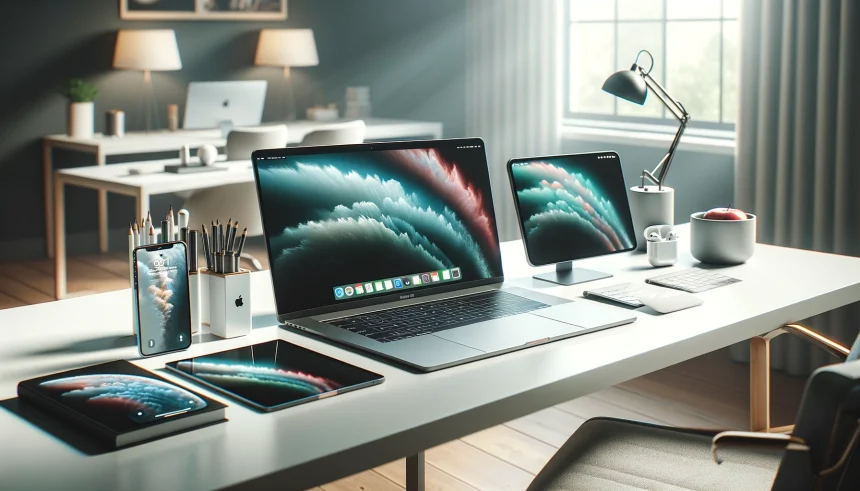Apple has unveiled a new feature in macOS 15 Sequoia, allowing users to snap app windows to different parts of the screen. This native window tiling functionality has been highly anticipated, as users have long requested a built-in solution for managing multiple windows efficiently. While third-party apps like BetterSnapTool and Magnet have offered similar capabilities, macOS previously lacked an integrated option. This new feature represents a significant upgrade from the limited split view introduced in OS X El Capitan.
How To Use Window Tiling in macOS Sequoia
To enable window tiling, users must navigate through the System Settings app under Desktop & Dock > Windows. By toggling the “Tile by dragging windows to screen edges” option, users can initiate the tiling feature. Dragging an app window to a screen corner or edge will display the tiling outline, showcasing positions such as top left, top right, bottom left, and bottom right quarters, as well as half-screen and full-screen options. For those who prefer to maximize a window, dragging it to the top of the screen near the center will achieve this without engaging Mission Control.
Window tiling also offers keyboard shortcuts for those who prefer not to use mouse inputs. By opening the Window > Move & Resize menu, users can find a list of native keyboard shortcuts tailored for window tiling. While these shortcuts rely on the Globe (Fn) and Control keys, they may not be compatible with all keyboards. Users can create custom shortcuts through System Settings > Keyboard > Keyboard Shortcuts > App Shortcuts, though success may vary.
macOS Sequoia Window Tiling Menus
The new tiling menus in macOS Sequoia can be accessed through the green button in the top left of a window or by selecting Window > Move & Resize on the menu bar. Hovering the cursor over the green button reveals tiling options, while clicking it enters full-screen mode. Additionally, holding the Option key while dragging a window or opening tiling settings unveils extra functionalities, making it easier to snap windows to specific positions without touching the screen’s edges. This feature is particularly useful for users with multiple monitor setups.
The native window tiling functionality in macOS Sequoia contrasts with a range of third-party alternatives that have filled the gap over the years. Popular options like Rectangle, Moom, and Amethyst have provided customizable and advanced features for window management. Despite the new native feature, some users may still prefer these third-party apps for their specific needs.
In previous versions of macOS, managing multiple windows efficiently required third-party solutions. Apps like BetterSnapTool and Magnet gained popularity for their ease of use and extensive features. With macOS Sequoia, Apple addresses a long-standing request from its user base, potentially reducing the reliance on external applications. However, the new native tiling may not fully replace these third-party tools for all users, especially those who need more customization options.
Evaluating the impact of native window tiling on macOS user experience will be interesting. Users accustomed to third-party apps might find the native feature less versatile, while others may appreciate the seamless integration. The overall reception will depend on how well the feature meets diverse user needs and whether it complements or replaces existing workflow tools. This addition to macOS Sequoia highlights Apple’s ongoing efforts to enhance user productivity and streamline the macOS experience.
Window tiling in macOS Sequoia offers a simplified yet functional solution for managing multiple windows. It provides users with various tiling positions and easy access through both mouse and keyboard inputs. However, the feature’s limitations and lack of extensive customization may still drive some users towards third-party applications. Understanding these trade-offs will help users decide whether to adopt the native feature or continue with their preferred third-party tools.










